‘People trapped inside carriages were yelling for help’
Resident recalls how no govt machinery reached for a good one-and-a-half hour

The two trains collided because the Zakaria Express was supposed to stop at the Jumma Goth Signal but its driver failed to do so. PHOTO: ATHAR KHAN/EXPRESS
“It was a doomsday scenario when the two trains collided,” shares Saeed Rehman, who lives adjacent to the area where the tragedy took place. “People trapped inside those carriages were shouting for help,” he said, adding that no government machinery reached the spot for one-and-a-half hour after the incident.
At around 7:35am on Thursday, Zakaria Express rammed into the last three bogies of Farid Express at the Landhi Station’s signal. According to the driver of Farid Express, Habib, his train was in a stationary position at the signal for five minutes as the Sukkur Express was at the Landhi station. Just as the train started moving, he heard a huge explosion, after which there was smoke and dust everywhere, followed by the screams and scenes of horror.
Motorway pile-up leaves 19 dead
Three carriages of Farid Express were completely damaged in the collision, which took the lives of 21 people and injured 45 others. According to the divisional communication officer of the Pakistan Railways, Nasir Nazir, each carriage has the capacity of at least 88 passengers and there were no less than 50 passengers in each of the three damaged bogies.
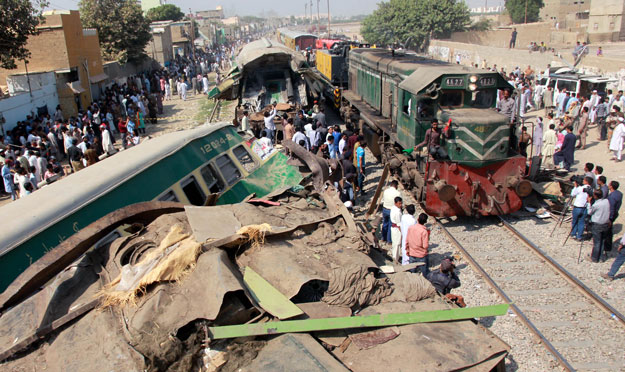 PHOTO: EXPRESS/ ATHAR KHAN
PHOTO: EXPRESS/ ATHAR KHANAccording to Rehman, Zakaria Express came in speed and rammed into Farid Express. As soon as the dust and smog settled down, he recalls, they saw three of Farid Express’s bogies mangled and overturned.
Parts of bodies strewn about
At the site of the accident, Azeem stands with his clothes soaked in blood. He was hardly a few feet away when the incident occurred. Talking to The Express Tribune, he recalls that the last bogie, No 52893, carried mostly women and children. “We literally pulled out parts of bodies from inside the mangled carriages,” he says, adding that the neighbours brought hammers and gas cutters from their homes to cut the bogies and rescue people.
“A barely five-year-old boy and his mother were screaming from inside the wreckage,” he says. “I couldn’t do anything to save them until a few more people came and we dragged them out after cutting the body of the train.”
The Pakistan Railways rescue team was the last to reach the spot at around 9:45am, he says. Meanwhile, a rescue worker of the Saylani Welfare, Danial, says that when he peeked inside the bogies, he saw parts of human bodies lying all around.
The site of the tragedy
A pair of two small black sleepers lies at a corner of the derailed passenger train’s ill-fated bogie No 12024. It lies next to clothes bearing bloodstains and water bottles strewn about. Wires are protruding out of the bogie’s side walls with broken fans lying on the seats.
The Landhi train tragedy
According to Pakistan Railways’ divisional superintendent, Nisar Memon, the driver who was supposed to stop Zakaria Express atJumma Goth’s signal, which is around four kilometres away from Landhi Station’s signal, failed to do so.

Meanwhile, an official of the Pakistan Railways’ workers’ union tells The Express Tribune that in the morning, trains enter Karachi back to back with a gap of 10 minutes. “When one train leaves the station, then the other train comes,” he explains, adding that until the train at the station doesn’t leave the station, the signals do not turn green for the other trains. He says that this has to be investigated if, in Thursday’s tragic incident, the driver missed the red signal or the signals were out of order.
At the hospital
Amongst the injured being treated at the accidental and emergency ward of the Jinnah Postgraduate Centre (JPMC), there is Malika Bibi, who appears to be in her 50s. She saved four children when the deadly train accident happened.
She was travelling alone to see her daughter in Karachi from Mailsi in the ill-fated train and herself suffered head, chest and various other bone-related injuries. “I also brought one child along with me to the hospital in an ambulance as blood was dripping from his head,” she says.
The traumatised woman shares her ordeal. “I heard a loud blast and suddenly out of nowhere everything collapsed and fell on passengers amid dust and smoke,” she recalls.
She recalls how planks fell on her but she took things in her hands to save the children by taking them out from the debris one by one. Later, an ambulance driver approached her and took her to JPMC when he saw her injuries.
Another survivor being treated at the facility, Zawar Hussain, shares how he was travelling from Vehari with eight members of his immediate family in the rear-most coach of the train, which was hit. All of them, including his wife, got wounded and are being treated at different wards of the hospital.
A total 21 casualties were reported at JPMC, says the joint executive director and head of accidental and emergency ward of JPMC, Dr Seemin Jamali. Nineteen of them - 16 men and five women - were brought dead while two others died during treatment at the facility, she shares. Most of the dead have yet to be identified and are beyond recognition. Among the 65 injured brought to JPMC, 49 were men, 15 were women and 11 were children with multiple injuries.
Published in The Express Tribune, November 4th, 2016.


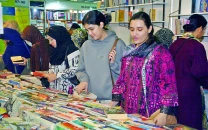
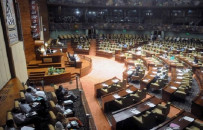
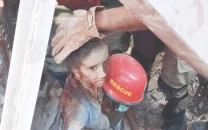
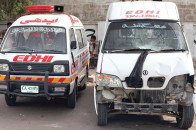
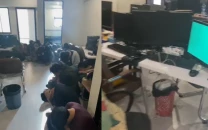




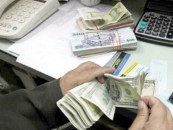







COMMENTS
Comments are moderated and generally will be posted if they are on-topic and not abusive.
For more information, please see our Comments FAQ